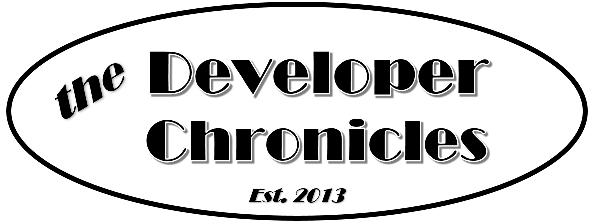Option Analysis in Design Management for Apartment Projects
Resource in the development management field is currently in short supply and irrespective of a growing development management team I have found myself running the conceptual and design management stage of 4 new apartment projects concurrently. Each project has its own separate architectural team whilst other consultants (planning, traffic, structural, CPTED, quantity surveying, services, geotech, acoustic, arborist, valuers, real estate research/agency, fire and civil infrastructure) are split across some or all of the projects. All together there are about 30 consultants.
The architects and project teams, some of New Zealand’s very best, have been briefed in a very specific way; show me the options !
The instruction is very clear and for good reason. I have learnt over the years, aided by tutelage from some of new Zealand’s most prolific developers, that there are almost an infinite number of ways to skin a development site. If you don’t explore enough of them you could quite easily fall short of making anything work and definitely will not extract the optimum result.
In my day job I can at least limit myself to residential options, but even-so the number of potential permutations can be significant.
To extract the best options is definitely an art. It is not so much the art of knowing the right option yourself, but it is the art of ensuring your team have explored enough options for you to solidify a quality solution.
Your objective may be to find the solution that maximize’s profit, or you may have to juggle a few other conflicting variables as well like stakeholder needs or social amenity which makes it even harder.
In these apartment projects I expect we will explore no less than 20 base options, shortlist as we go and then explore a dozen or more sub options, just to land on a bulk and location that ‘sort of’ works. Then as we start to go through the detail many more variants will be explored until we settle on a conceptual design or two to present to my client (our government stakeholders). Indeed all four of these projects are well into base options numbering in the teens (and if any of my team are reading – we are not there yet!).
How much does all that cost you say?
Well it’s a lot cheaper at this stage than diving into the detail and expense of developed design for a flawed option or worse building and trying to sell the wrong option.
Of course architectural design is not the only parameter to consider, early on you have to juggle design options with project cost and project profit (plus in my case project economic value). Project economic value is the attempt to quantify value outcomes where the financial gain is more subjective – i.e. how much value to you ascribe to healthier people in healthier homes creating less reliance on the health system, or how much value to you put on enabling community interaction to limit social seclusion, a safe driveway for kids etc.
It is a constant juggle between design and project feasibility. One cannot change the design without simultaneously looking at the implications on cost and value. So you work most with the architect, but you need constant interaction with other consultants and your own cost and value judgments. We make the assumption here that before you have engaged a project team, and perhaps even the architect you have already explored a number of financial feasibility options and decided to progress to bulk and locations and conceptual design.
Exploring options in conceptual planning helps a development manager tease out what are the most important components of a development. If we focus on the residential apartments I am involved in only, these components can range from fundamental elements to more detailed nuances.
Fundamental elements include:
– The number of units (often the prime determinant in maximising profit)
– What type of units – how big, how many bedrooms and how many bathrooms
– How many car parks are required
– Car parks on grade, underground, under-croft or above ground
– How high a building, how many levels versus its site footprint, floor to ceiling heights
– How many buildings on a site
– Separation between buildings on a site
– Types of building circulation and access – central core, internal corridors, external walkways (not a fan by the way!)
– How far one must walk to their unit from the vertical circulation point, how many unit entrances must they walk past, how many options does one have to get to their unit
– Stairwells and elevators
– Amenity provided – parks, playgrounds, gardens, gym, community space
– Orientation of units towards the sun
– Orientation of units towards any views or outlook
– Orientation of units towards neighbors, and the view of neighbors
– Location of units relative to each other and circulation
– Single aspect versus dual aspect
– Vehicle access into and out of the site
– Existing trees on site, and effect of neighbors trees
– Curb appeal and streetscape
– Do we refurbish, demolish, or adapt and reuse
These big ticket items contribute significantly to how much the project is going to cost and how much it is going to value or sell for.
Detailed nuances (at least a very small subset of) can include:
– Size and orientation of decks, patios and outdoor living
– Placement of trash collection
– Loading spaces, truck turning
– Pedestrian access versus vehicular access
– Circulation widths
– Considered views and outlook from every window
– Views from the street into units
– Letterboxes
– Number of entries and exits
– Occupant interaction areas
– The journey between car park and unit
– Retaining walls and dealing with slopes
– Fencing and gates
These detailed nuances are often the little things that make a project, all too often neglected in design but very apparent when construction is complete and people are living there. A comprehensive option analysis helps address these important areas early on to derive most value.
Another aspect of option analysis I have found useful is when you are creating the development on behalf of a client, and that client has many stakeholders who have an involvement and/or contribute to project decisions. There is a trap in this situation, especially if the brief you start off with has any ambiguity, even if you have created the perfect concept you still have to sell it.
It is impractical to involve all stakeholders throughout the design process all of the time. Even if you could, opinions and committee thinking can tend to dull down good design decisions and you can find yourself constantly fighting others propensity to take wild tangents or question decisions already made at a higher pay grade. That means you have to present concepts and options to stakeholders to give them legitimate involvement, but carefully contained to ensure project objectives are met.
For many stakeholders this may be the first time they have seen a concept. Here lies the trap – you proudly present one option (your very best) to your stakeholders. Regardless if it is the most perfect concept ever developed you are likely to get critique, and if any of the stakeholders are not property development experts the critique may be deafening (and project threatening) even if it is entirely left field noise.
To prevent being locked in this iron maiden of a conundrum; show them the options !
What I am doing on these projects is to ensure every hand drawn sketch on butter paper, every bulk and location drawn using CAD, every section and every floor plan drawn is kept and ready to format into a display folder. Good architects do this anyway, but the key is to make sure they are not throwing away options they discarded before they showed them to you in the first place. It is also important to keep long ago considered schemes and not just to keep a few variants of the final scheme.
To me it is just as critical to show what options don’t work as to what does.
This folder provides the ‘evidence’ of the design management evolution you have been through and you can present it to your stakeholders and decision makers. As you flip through the options, sometimes reinforced by an accompanying financial feasibility, the story emerges of what strategies you have looked at, what ideas you have dismissed and most importantly helps you explain all the reasons why it is where you ended up.
If you show them the options, then they may just show you the money !
Andrew Crosby
andrew.crosby@aenspire.com
www.aenspire.com

